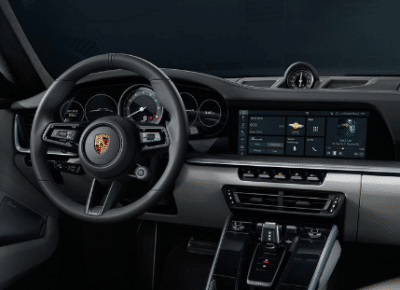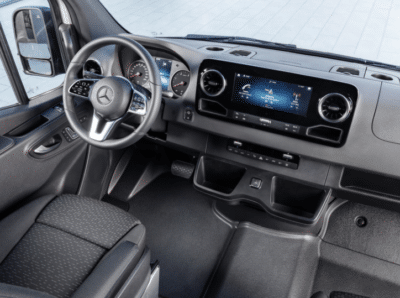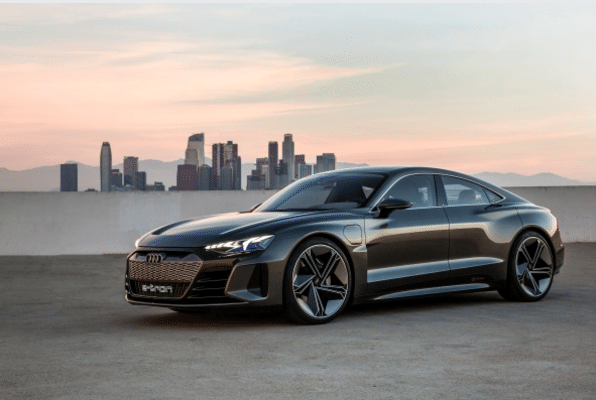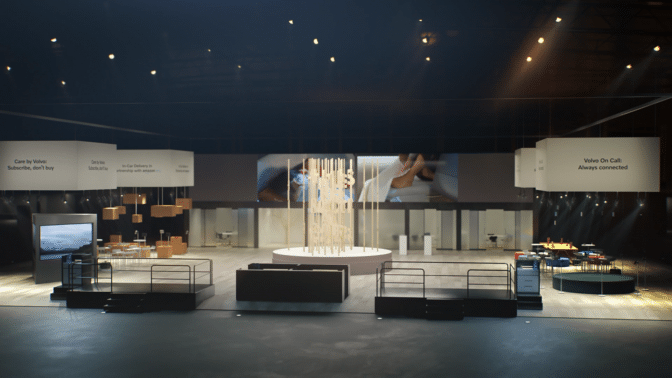As the home of classic films and Hollywood blockbusters made possible by cutting-edge technology, Los Angeles has always been buzzing with excitement. And this year’s 111th running of the Los Angeles Auto Show fits right in.
During the show preview this week, automakers unveiled sleek redesigns of iconic models, as well as innovative concepts coming in the next few years and beyond. Huge crowds of industry-watchers and journalists flocked to the reveals.
Powered by the high-performance, energy-efficient compute of NVIDIA, these new vehicles mark the latest and greatest in automotive technology.
From sports cars to utility vehicles to no cars at all, the show’s exhibits combine breathtaking design with cutting-edge technology. And with NVIDIA tech inside, these models are equipped for an autonomous future with industry-leading graphics, compute and safety.
Beautiful Displays in the Land of the Silver Screen
For decades, the Porsche 911 Carrera has reigned as the megastar of sports cars. This week, Porsche showcased the eighth generation of this iconic model, a powerful combination of a classic sporty exterior with an interior fit for a high-tech driver.
 The latest Porsche 911 Carrera boasts a 10.9-inch touchscreen and digital cockpit, powered by NVIDIA.
The latest Porsche 911 Carrera boasts a 10.9-inch touchscreen and digital cockpit, powered by NVIDIA.
For the next model in its recently introduced all-electric e-tron lineup, Audi has envisioned performance for the electrified age. The Audi e-tron GT concept — revealed at an event featuring “Iron Man” actor Robert Downey Jr. and anticipated for production in 2020 — merges next-generation design and propulsion with the power and dimensions of a classic Gran Turismo.
And the power isn’t just in the electrified powertrain. Running on NVIDIA, the e-tron GT features the crisp displays of the Audi MMI infotainment system found in its newly introduced sibling, the Audi e-tron SUV. The e-tron GT will make its own big screen debut this summer, with the premiere of “Avengers 4.”
Sports cars weren’t the only vehicles to get the interior star treatment. At the Mercedes-Benz stand, the all-new Sprinter van, A-Class sedan and GLE crossover featured the high-tech Mercedes-Benz User Experience (MBUX) infotainment system.
MBUX is a fresh take on the cockpit expe rience, using rich, real-time 3D graphics and AI powered by NVIDIA. The redesigned Mercedes Sprinter van will mark the debut of the trailblazing system in the U.S. market when it hits dealerships at the end of this year.
rience, using rich, real-time 3D graphics and AI powered by NVIDIA. The redesigned Mercedes Sprinter van will mark the debut of the trailblazing system in the U.S. market when it hits dealerships at the end of this year.
Back to the Automotive Future
Making a show-stopping statement this year, our partner Volvo Cars didn’t feature any cars on their stand. Rather, the automaker displayed the many ways it’s working toward developing services and technology for an autonomous future.
From flexible ownership models like the Care by Volvo subscription service, to entirely new vehicle concepts like the 360c, Volvo is looking at the next decades in automotive from an entirely different angle.
“Our industry is changing. Rather than just building and selling cars, we will really provide our customers with the freedom to move in a personal, sustainable and safe way,” said Håkan Samuelsson, chief executive of Volvo Cars.
At the visionary stand, Volvo featured a virtual reality demonstration of the variety of ways vehicles can be transformed when they no longer need a human driver — from an office, to a living room, to a hotel on wheels. For the near-term, Volvo recently announced it will produce Level 2+ automated vehicles running on NVIDIA DRIVE AGX Xavier to begin this transition with enhanced driver assistance systems.
By partnering with NVIDIA on these new technologies, Volvo ensures they’ll maintain the same commitment to safety the company has embodied in the past, while incorporating innovations like AI and autonomy for the future.
Open to the public today and running through Dec. 9, this year’s L.A. auto show is an exciting preview of the industry-leading designs and technologies NVIDIA is developing with our automotive partners.


